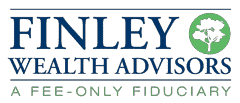- You are here:
- Home »
- Blog »
- Investment Advice »
- Cost of Investment Decisions And Why They Matter
Cost of Investment Decisions And Why They Matter

Wild markets, legislative updates, unexpected personal events … Much of what impacts your investment decisions is beyond your control. That said, you do have a big say on how much you spend on investing. By tending to the costs of your investment decisions, you can control how much you need to spend when you invest … which leaves more of what you’d like to keep for yourself.
Let There Be Cost-Disclosure Light

It stands to reason: Any unnecessary investment expense represents money that’s leaving your pocket and going somewhere else, with no benefit to you.
So, our first tip is to do what you can to track the investment costs you’re incurring. If you don’t know what you’re spending to begin with, or how it compares to similar solutions, it’s hard to know if you’re spending too much.
As we discussed here:
“Financial professionals and investors alike should insist on clarity wherever it seems lacking. Instead, there is evidence that investment costs remain ‘out of sight, out of mind’ for many consumers.”
Avoiding the Obvious Costs

First, there are the more obvious costs, readily apparent if you take the time to look for them. For example, there are:
Fund management costs
If you are investing in mutual funds or exchange-traded funds (ETFs), take a look at the fund’s “expense ratio” in its prospectus or elsewhere online. This is basically a fancy term for a fund’s management costs, displayed as a percentage of its assets. These days, a well-managed index or index-like fund should cost you well under 1% … closer to 0.2% on average. The extra dollars spent on funds that cost closer to 1% (or more!) are far more likely to detract from than add to your end returns. This is also a factor in your investment decisions.
Loads
Also watch out for front- or back-end loads, and “12b-1 fees.” Whether you pay up front (front-end), when selling the fund (back-end) or yearly (12b-1), these are basically commissions to compensate sales staff for promoting the fund to you. Don’t buy it. Find a comparable, no-load fund instead.
Trading costs
When you buy or sell mutual funds, stocks, bonds, or other securities, you might pay a broker a commission to place your trade. Today, trading costs have been trending downward, especially for stock and ETF trades, which are now often free. This is one case in which the rock-bottom cost may not be your best choice. More investment decisions: Trading costs matter, but their dollar amount pales in comparison to the less obvious cost of holding a security that is inappropriate for your greater investment plans.
In general, when considering obvious costs, we suggest first establishing a personalized investment plan that reflects your goals and risk tolerances. Then identify the most efficient, effective investments for achieving your goals. Then do your cost comparisons among those appropriate solutions.
Uncovering the Hidden Costs

If the only investment costs were those conveniently displayed in a table or chart, we could conclude this post here and now. Unfortunately, many investment costs are far less obvious, and can be far more damaging. That means our work is not yet done and there are more investment decisions. Without trying to uncover every potential investment cost, following are some of the more important ones:
Expensive Trading Practices
Some funds are simply better managed than others. When you or I trade a few shares, the market won’t notice. But fund managers must sometimes trade quickly, in huge volumes. Those who aren’t careful and patient in doing so incur unnecessary costs by driving up bid/ask spreads or otherwise “moving” market prices as they trade. They end up paying more for the buys and earning less for the sells than otherwise expected, which ultimately decreases your end returns.
Opportunity Costs
If you (or your fund manager) commits to one strategy when another would have delivered higher end returns, you incur “opportunity costs.” This is the difference between the lower value of the position you took versus the higher one you could have had instead. In aggregate, active investing (jumping in and out of the market, or speculating on concentrated stock picks) tends to generate opportunity costs. Instead, simply create a sensible investment plan and stick with it over time.
High-Interest Debt
While incurring high-interest debt isn’t strictly speaking an investment cost, you might think of it as a specialized opportunity cost. If you’ve got credit card debt or other high-interest loans, your debt load is eating up lots of money that could instead be sensibly invested.
Hiring an Independent Advisor Can Pay for Itself

Heeding free advice from a financial intermediary can cost you dearly. Clearly, they are earning their keep somehow, which means their “free” advice is usually a sales pitch in disguise. It also may be irrelevant to your particular financial circumstances, or just plain confusing.
We recommend hiring an independent advisor for guidance in your investment decisions and to help you identify and implement your own best financial future. Here are a few things to look for, to ensure you’re getting your money’s worth:
- How stable is the strategy? How is your advisor proposing they manage your money?
- Will they help you establish a detailed financial plan and investment plan to document your personal financial goals and strategies?
- Is your investment portfolio structured according to decades of robust evidence on how to capture long-term market growth in accordance with your risk tolerances?
- Is the strategy implemented with efficient, low-cost solutions?
- Are all of your assets being managed as an integrated whole (including “outside” accounts such as your company retirement plan)?
Taming the Financial Lions and Tigers and Bears
In the classic film, “The Wizard of Oz,” Dorothy encounters perils galore, only to realize her ruby slippers could have whisked her to safety all along. Just like Dorothy in the Land of Oz, you have little control over the perils of investing in ever-changing capital markets. But you do have one potent power well within your grasp. By ensuring you are keeping a tight lid on investment cost decisions, you can more swiftly reach your goals, while combating the unknown lions, tigers and bears you meet along the way. You can feel more secure in your investment decisions.
About the Author Doug Finley
Douglas Finley, MS, CFP, AEP, CDFA founded Finley Wealth Advisors in February of 2006, as a Fiduciary Fee-Only Registered Investment Advisor, with the goal of creating a firm that eliminated the conflicts of interest inherent in the financial planner – advisor/client relationship. The firm specializes in wealth management for the middle-class millionaire.
Related Posts
Bringing Order to Your Investment Universe Part 2: Transitions and Taxes
Which Country Will Outperform? Here’s Why It Shouldn’t Matter.
Understanding How Markets Work for You: Principle 4 in Evidence-Based Investing
The More Things Change
What’s Baked into Your Credit Exposure?
Top 500 Stocks, Give or Take $2.1 Trillion
Japan in the News, But It’s Nothing New
Curve Your Enthusiasm with Fed Activity
Session expired
Please log in again. The login page will open in a new tab. After logging in you can close it and return to this page.
